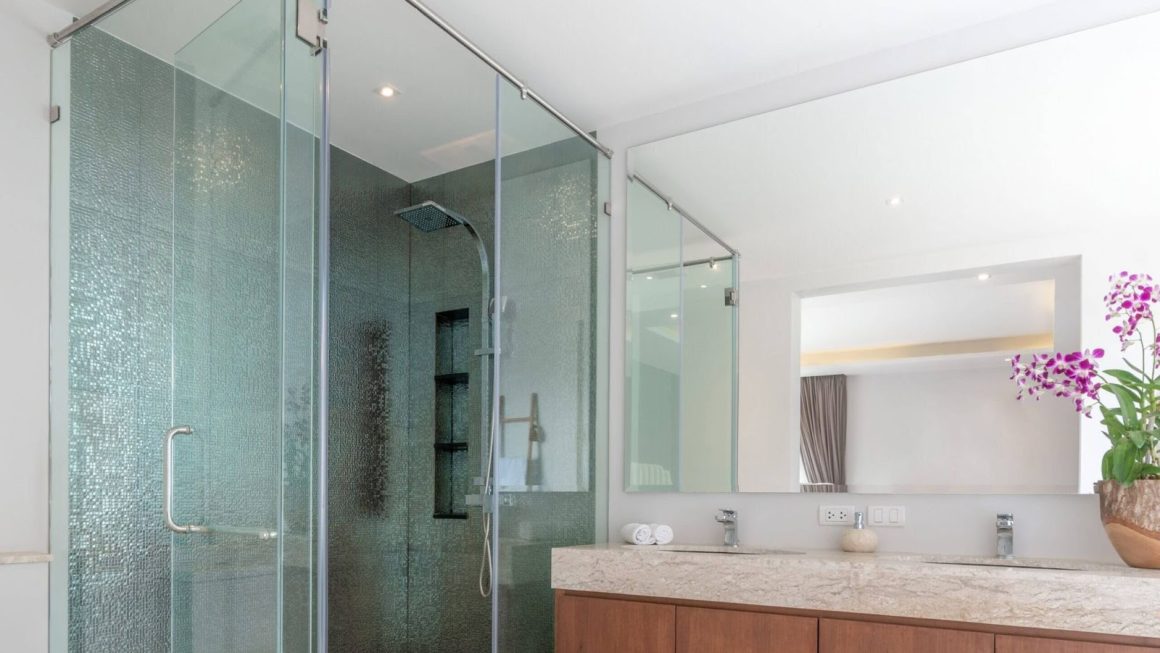Depending on the age of your home, you will most likely need the services of a plumber at least once every three years. Obviously, there are a number of variables that affect how long your plumbing will run before you need to hire a professional plumber. That said, there are also some plumbing problems that you can fix on your own without having to spend the money on a plumber.
Here are the 8 most common plumbing problems and what you can do about them.
# 1 – smelly tap water:
There are three main types of odors you can smell in tap water. The first type is the smell of sewage or rotten eggs. This odor is usually caused by the presence of food particles and other organic waste in your drain. The bacteria digest food particles and other organic wastes in the drain, then release hydrogen sulfide. Gas can fill the drain near the sink and when the faucet is turned on, it is forced up and out of the faucet, releasing the odor into the air.
Sometimes this smell only occurs when you turn on the hot water. In such a case, it is likely that the odor is coming from bacteria growing in your hot water tank. Another type of smell is that of a swimming pool or bleach. In such a scenario, the odor will have been caused by too much chlorine in the water. The last type of smell is a metallic smell. A metallic odor is usually caused by the corrosion of copper used for plumbing in the house.
Solution to this plumbing problem:
If you haven’t used the sink for a while, prepare a mixture of baking soda and water (the ratio should be 1: 1) and pour it into the drain. Wait 20 minutes, then rinse it by pouring water into the sink.
When tap water smells of rotten eggs, check that the water heater temperature is at the recommended levels (115-125 degrees) and if not, adjust it accordingly. Draining the water inside the hot water tank can also help.
When tap water smells of bleach, it is usually the result of a high concentration of chlorine. Running the water for a minute or two should get rid of the smell.
When tap water has a metallic smell – running the tap for a minute will eliminate the smell.
If the odor is the result of organic waste, use an eco-friendly drain unblocker to introduce bacteria and enzymes that can help digest organic waste without damaging your plumbing or septic tank (if you have one).
# 2 – Smells in the bathroom
Smelly toilets are usually caused by contaminated water sources. This is a common problem for homes that have a septic tank. Septic tanks use the bacteria that thrive in the tank to break down organic waste. Due to the harmful products that people use, the bacterial colony is affected and this impairs the rate of digestion of organic waste. As a result, organic waste is evacuated to the leach field before being completely digested, resulting in blockages. These blockages lead to leaks that end up contaminating the groundwater. In some cases, backdrafts can occur in the house and this will cause the bathroom to smell foul of hydrogen sulfide(smell of rotten eggs).
Solution to this plumbing problem:
Shock treatment products should be able to get your septic system back to good working order. To do this, it is enough to introduce billions of bacteria and enzymes into the septic tank. These bacteria immediately begin to digest organic waste, which eventually unclogs the septic tank.
# 3 – leaky faucets
It is one of the most common plumbing problems in most homes. Leaky faucets are not only annoying, but they also waste a lot of water in the long run. A small leak may not seem like a big deal, but the cumulative effect is huge. For example, a leak of 10 drops every minute ends up wasting 300 gallons of water per year. If you have a septic tank, a leaking faucet can contribute to hydraulic overload in the septic tank and this can interfere with the digestion of organic waste. Faucet leaks are usually caused by worn washers or O rings, so they are relatively easy to repair.
Solutions to Leaking Faucet Plumbing Problems
Step 1: Close the hot and cold water supply valves. They are usually found under your sink. If you can’t see them under the sink, turn off the main meter for the whole house.
Once this is done, follow the next steps depending on the type of faucet you have.
Repairing a leaking compression valve
Step 2: Remove the cap from the handle. You can do this by removing the handle screw and then gently applying pressure under the handles to remove them.
Step 3: Loosen the hood nut using an adjustable wrench. Remove the stem from the faucet by unscrewing the screw that holds the washer on the stem.
Step 4: Attach a replacement washer to the stem, then reinstall the stem, hood nut, and handle.
Repairing a leaking two-handle washerless faucet
Step 2: Access the socket the same way you would a compression faucet, then start with the valve handle working your way down.
Step 3: Remove the socket then replace it with a new one.
Step 4: Reinstall the rod, hood nut, and handle.
Repairing a leaking single-handle washerless faucet
Step 2: The exact method of removing the valve sleeve varies depending on the manufacturer. However, the first thing to remove should be the handle screw which is usually located under the handle, although it can sometimes be under a hood on top of the handle. You can then unscrew the handle of the faucet.
Step 3: Loosen the nut to reveal the valve sleeve, then remove the clip that holds the valve sleeve, remove the sleeve and replace with the new one.
Step 4: Reinstall the hood nut and handle.
# 4 – leaky piping issues
Leaky pipes are very annoying! This can cause problems in your home as well as in your garden. In addition, it can cause serious material damage – especially if not repaired in time. Visible leaks usually lead to flooding while hidden leaks can lead to deterioration over time. Leaking hoses are usually caused by normal wear and tear or other physical damage that can cause the hoses to rupture.
Solution to this plumbing problem:
It’s a good idea to hire a licensed plumber to fix leaky pipes. Most likely the plumber will have to dig to get to the problematic pipe. Replacing faulty pipes is a tricky process, as it could interfere with your neighbors’ water supply. This is one more reason why you should leave this task to a qualified plumber who knows how to fix the plumbing problem with minimal interference with the water supply. Visit Aqualuxdp website and consult with plumber Mississauga.
# 5 – Constantly running toilet
Toilets haven’t changed too much over the years – regardless of your model, they work the same way. When the toilet is flushed, the water fills the tank and this is what raises a float which stops the water as soon as it reaches a certain level. There is a lever that usually opens a valve to allow flushing and it pops back into place whenever the water level drops. This operating mechanism can fail, making the toilet flush too weak or a problem with a constantly functioning toilet.
Solution to this plumbing problem:
Before trying to repair your toilet, make sure the water is turned off at the base of the toilet, then flush the toilet to make sure the toilet tank is empty. You can soak up any excess water in the tank with a sponge. This should give you a dry working environment to check the various components as described below.
Start by checking the valve seat to make sure there is no corrosion and clean it if necessary. Make sure the guide wire is not misaligned.
A faulty flapper or flush valves are the most common reasons toilets keep running. The valve is made of rubber and it can deteriorate over time as it is still underwater. If you gently rub the valve and have streaks on your finger, your valve is worn out and needs to be replaced. Take the worn valve to a hardware store to make sure you get the exact same one, then replace it.
Every toilet tank has an overflow tube and sometimes the leak can occur from there. Usually this means that the float arm is not screwed properly in place. Screw it on tight and that should fix it.
# 6 – frozen piping problem
Frozen pipes usually occur during the winter. Water expands by freezing and this can put unbearable pressure on the water pipes. Sometimes frozen water can even cause pipes to burst. The pipes that freeze most frequently are those that are exposed to the cold, e.g. pool lines, sprinkler lines and lines outside the house. Pipes that are in any unheated segment of your home like the basement, garage, and attic can also freeze in the winter.
It is a good idea to remove and drain all the pipes used outside the house just before winter. Also, open the outside faucets to allow all the water to drain out and keep the outside valve open to allow the ice water to expand without bursting the hoses. You can also install insulation materials over an exposed pipe to make sure it is frost-free in the winter.
Solution to this plumbing problem:
Use a hair dryer to thaw the frozen water by blowing hot air over the hose. Locate where the pipe enters the house and use the hair dryer there. Do not try to use a blowtorch, as this will cause the water in the pipes to boil, which could also break them.
# 7 – noisy pipes
There are four main reasons why pipes can be noisy. First on the list is if any mounting straps are loose. When the hoses are not held firmly in place, the flowing water can cause them to shake. The second reason for noisy pipes is high water pressure. When the water pressure is higher than normal, it can cause the pipes to vibrate, thus making noise. The third reason is described as the “water hammer”. That’s when a rush of water in a narrow pipe suddenly hits a closed valve. The fourth and final reason that pipes can be noisy is insufficient damping. Water pipes can shake when water passes through them, causing noise.
Solutions to this plumbing problem:
Check all hoses to make sure they are in place and replace or tighten any that are loose. This should take care of all the clicking noises. If you are dealing with old pipes, anchoring them can be a problem and you may need to seek help from a plumber.
Normal water pressure should be between 30 and 55 psi. The problem of high water pressure plumbing can easily be solved by reducing the pressure entering your home on the water pressure regulator or valve. If you don’t have a regulator installed in your home, you may want to have a plumber install one for you.
A functioning inner tube can help prevent “water hammer”. The inner tube will act as a shock absorber when a jet of water arrives at the end of a pipe. If you are experiencing “water hammer” in your home, it means that you do not have an inner tube installed and you should consult a plumber to install it for you.
Adding insulation around water lines can help reduce clicking noises. Use foam or safe insulating rubber, but do not overwrap the pipes. You must leave space for the expansion and contraction of the pipes.
# 8 – Home smells
Odors in your home almost always indicate a plumbing problem. A common cause of home odors is your basement drain drying out, allowing sewer or septic gas to escape into your home. Another common cause of odor in the home is a frozen or damaged vent. The vent maintains and equalizes the pressure in the pipes as wastewater flows through them. If the vent stops working, the toilets and faucets in your home will start gurgling and smelling. The sump pump can also cause household odors, especially if the ejector sump pump basket cover is not properly sealed. Regularly fill your floor drain with water to make sure it doesn’t dry out. Also inspect the cleanout access plug in the drain to make sure it is not loose, as sewer gas could escape through.
Inspect your vent to make sure it is in good working order. If it’s frozen from the cold, just wait for a hot day and it will thaw. But if you’re in winter and a hot day isn’t coming anytime soon, use a sprinkler to thaw the vent.
If you have a septic tank, treat the root cause of septic odor using biological treatment. Aqualuxdp’s solutions work great because they are made from bacteria and enzymes and will treat odors at the source.
Conclusion
Plumbing is often misinterpreted as messy, complicated and difficult work. Most people turn to a plumber as soon as they spot a small leak. But as we have seen in this article, there are some plumbing issues that are extremely easy to fix. And the rule of thumb is to fix the problem as quickly as possible. The longer you delay fixing plumbing problems, the worse it gets. For example, fixing a leak as soon as you notice it will be easier than waiting a few months before fixing it. However, if you are trying to fix your plumbing and encounter unforeseen problems, speak to a qualified plumber immediately to avoid making the problem worse than it already is.



